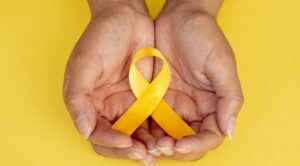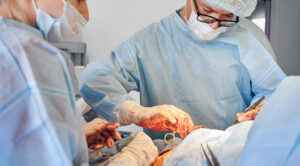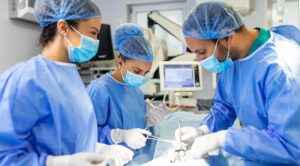Although gallstones are a frequent medical condition, did you know that women are more likely than men to get them? Pregnancy, birth control drugs, hormonal fluctuations, and even lifestyle choices might raise a woman’s risk. Some gallstones remain “silent” and unproblematic, but if left untreated, others can cause excruciating pain and major consequences.
Early symptom awareness can make all the difference in getting treatment on time. Let’s go over the warning flags that all women should be aware of.
Early symptom awareness can make all the difference in getting treatment on time. Let’s go over the warning flags that all women should be aware of.
Why Women Are More Prone to Gallstones
It’s helpful to understand why gallstones frequently affect women before diving into the symptoms. When chemicals in bile, a fluid that aids in fat digestion, solidify inside the gallbladder, gallstones are created. Women are more at risk for the following factors:
- Hormones(Progesterone and Estrogen): Elevated estrogen levels, particularly during pregnancy or as a result of birth control, can raise bile cholesterol and cause stones.
- Pregnancy: Hormonal changes increase the risk of stones by slowing gallbladder movement.
- Age and Lifestyle: The risk is increased for women over 40, overweight people, and people with a family history of gallstones.
Common Symptoms of Gallstones in Women
Gallstones don’t always cause issues. Actually, some are discovered by accident when doing an ultrasound for another problem. However, symptoms should not be disregarded when they do manifest.
Here are the most common signs:
1. Abdominal Pain (Biliary Colic)
The classic symptom is this one. A sharp, stabbing, or cramping pain in the upper right abdomen is how many women characterize it. The pain may:
- Begin abruptly, frequently following a high-fat meal.
- Last anywhere from a few hours to thirty minutes.
- Radiate to the right shoulder blade or back.
Some patients compare this pain to kidney stone pain or labor pains because it can be so severe.
2. Nausea and Vomiting
Gallstones make digestion more difficult by obstructing the bile’s regular release. This frequently causes nausea or vomiting, particularly after large meals. It’s a warning sign, yet some women ignore it as “indigestion.”
3. Bloating and Digestive Discomfort
Frequent bloating, belching, or a sense of fullness after small meals are common complaints among women with gallstones. This occurs as a result of restricted bile flow, which reduces the effectiveness of fat digestion.
4. Indigestion After Fatty Foods
Gallstones may be the cause if you find that fried meals, cheese, or creamy dishes frequently cause pain or discomfort. Following such meals, women frequently report that their symptoms worsen.
5. Back and Shoulder Pain
It may surprise you to learn that gallstone discomfort is not necessarily localized in the belly. The pain may radiate to the right shoulder blade or upper back, leading some patients to believe that there is a problem with their muscles or spine.
6. Jaundice (Yellowing of Skin and Eyes)
If a stone blocks the bile duct, bile pigments can enter the bloodstream, leading to jaundice.
Women may notice:
- Yellowish skin or eyes
- Dark urine
- Pale-colored stools
This is a critical symptom that needs to be treated right away.
7. Fever and Chills
Gallstones can occasionally result in cholecystitis, an infection of the gallbladder. Fever, chills, and increasing stomach pain are possible symptoms. You should never disregard this emergency.
Silent Gallstones: Should You Worry?
Gallstones that are asymptomatic in many women are frequently found during scans performed for other purposes. Unless there is a significant danger of problems, doctors may advise watchful waiting in certain situations. However, surgery, typically laparoscopic gallbladder removal, is the best course of action once symptoms start to show.
Why Early Diagnosis Matters
At first glance, gallstones may appear innocuous, however neglecting symptoms might result in problems like:
- Acute Cholecystitis: Inflammation of the gallbladder
- Pancreatitis: When stones block the pancreatic duct
- Bile Duct Obstruction: Leading to infection or jaundice
Women may delay seeking treatment because they think the discomfort is “just acidity” or “gas.” However, early diagnosis with an ultrasound or scan can prevent emergencies.
How Are Gallstones Treated?
Although medications and lifestyle modifications can alleviate moderate symptoms, gallstones are typically not entirely dissolved by them. Surgery is the only way to address problems if they become troublesome.
- Minimally Invasive (Laparoscopic) Surgery: Most women undergo this procedure, which uses small cuts, causes less pain, and has a faster recovery.
- 3D Laparoscopic Surgery: An advanced option that gives surgeons better precision and patients quicker healing.
Recovery is usually smooth, and most women return to their routine life within a week or two.
Lifestyle Tips for Women to Prevent Gallstones
Certain lifestyle modifications reduce the risk of gallstones, even though not all of them can be avoided:
- Keep your weight in check and stay away from crash diets, as they might cause gallstones.
- To maintain an active metabolism and digestion, engage in frequent exercise.
- Consume a diet rich in fiber and low in greasy or fried foods.
- Drink enough water to maintain a healthy bile flow.
Key Takeaways
- Hormones, pregnancy, and lifestyle factors increase the risk of gallstones in women.
- Abdominal pain, nausea, bloating, indigestion following fatty meals, back/shoulder pain, jaundice, and fever are typical symptoms.
- Although silent gallstones might not require treatment, surgery is the best course of action once symptoms start to show.
- 3D laparoscopic and minimally invasive procedures speed up recuperation and make treatment safer.
- Avoiding problems requires early diagnosis.
Consult Specialist
Women are more likely than most to have gallstones. Ignoring the warning signs can result in extreme discomfort and considerable health hazards, even though some people do not experience any symptoms. Don’t write off chronic stomach pain, particularly after meals, or any of the other symptoms mentioned above as “just indigestion.”
Modern treatment choices and prompt medical consultation can let you resume your comfortable lifestyle without having to worry about unexpected gallstone attacks.





